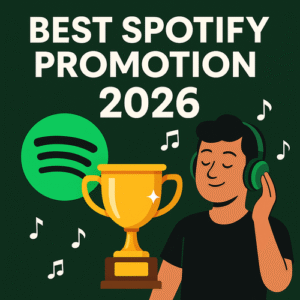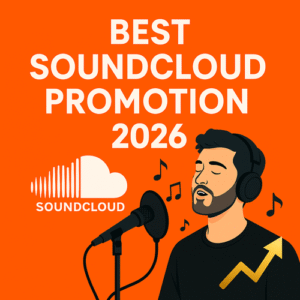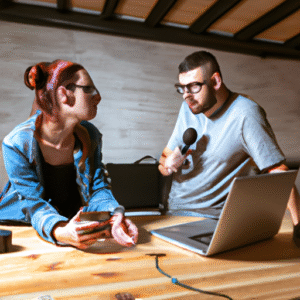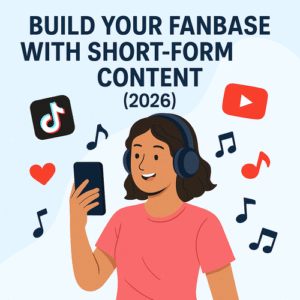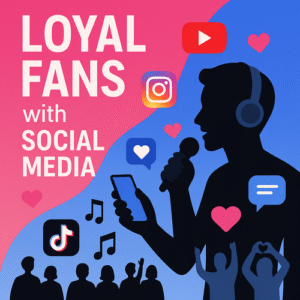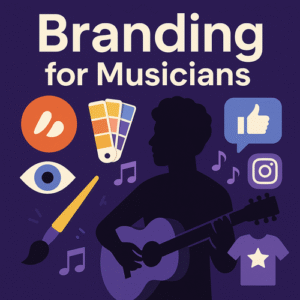Spotify playlists are one of the most powerful ways for independent artists to reach new listeners and boost their streaming numbers. Getting your music on the right playlists can lead to thousands—or even millions—of plays, as well as new fans around the world. But landing a spot on these coveted playlists can feel mysterious or out of reach, especially without a label or manager. The good news: with the right approach and a bit of persistence, independent artists in 2025 have more opportunities than ever to get playlisted. Here’s a step-by-step guide on how to get your music on Spotify playlists and maximize your reach.
Understanding Spotify Playlists
There are three main types of Spotify playlists you should know about as an independent musician.
Editorial Playlists:
These are curated by Spotify’s own editors and include massive lists like “New Music Friday,” “Rap Caviar,” and “Fresh Finds.” Editorial playlists are the most influential and can drive huge streaming spikes.
Algorithmic Playlists:
These are generated by Spotify’s algorithms and personalized for each user. The most famous examples are “Discover Weekly,” “Release Radar,” and “Daily Mix.” Getting your track into listeners’ algorithmic playlists is all about engagement and quality.
User-Curated Playlists:
These are made by everyday Spotify users, influencers, bloggers, brands, and even other artists. Some user playlists have millions of followers, while others are small but highly engaged.
Each playlist type offers unique advantages, and building your presence across all three is key to long-term success.
Prepare Your Track for Playlist Success
Before pitching to any playlist, make sure your song is ready. This means high-quality audio, professional mastering, compelling cover art, and accurate metadata (artist name, song title, genre, etc.). If you release an unfinished demo or skip the final polish, curators and algorithms will be less likely to notice your work.
Make sure your track is distributed to Spotify via a trusted distributor (like DistroKid, TuneCore, CD Baby, AWAL, etc.) and that it’s set for release at least four weeks in advance. Early delivery increases your chances of being considered for editorial playlists.
Claim and Optimize Your Spotify for Artists Profile
Before you pitch your track, you need to claim your Spotify for Artists profile (it’s free). This lets you:
- Upload a professional artist photo and banner
- Write a compelling bio and add links to your social media
- Track your real-time stats and listener demographics
- Submit upcoming releases for playlist consideration
A complete, up-to-date profile helps curators take you seriously and builds trust with listeners.
How to Pitch to Spotify Editorial Playlists
Spotify allows you to pitch unreleased music to their editorial team directly from your Spotify for Artists dashboard. Here’s how to do it right:
- Schedule your release at least four weeks in advance
- Go to your Spotify for Artists dashboard, select the unreleased track, and click “Pitch a Song”
- Fill out all the details, including genre, mood, instruments, and languages
- Share a story: explain the inspiration, what makes the track special, and any promo plans (videos, PR, etc.)
- Hit submit and spread the word to your fans
Even if your song doesn’t make it to an editorial playlist, pitching ensures it will appear in your followers’ Release Radar playlists on release day.
Getting on Algorithmic Playlists
Algorithmic playlists are all about data. The more engagement your song gets—saves, playlist adds, shares, and full listens—the more likely Spotify’s algorithm will recommend it to others.
To boost your chances:
- Drive pre-saves and follows before release
- Encourage fans to save, like, and share the song when it drops
- Promote your track on social media, your website, and especially through your email list
- Respond to comments, DMs, and fan messages to show real engagement
The algorithm rewards tracks that people genuinely love and replay, so focus on quality and authentic fan relationships.
Connecting with User-Curated Playlists
User playlists are an amazing resource, especially for new artists. Start by researching playlists in your genre using tools like Chartmetric, SpotOnTrack, or even a simple Spotify search.
Find playlists that feature similar artists and have engaged followers. Many curators list their email or social handles in the playlist description. Reach out with a friendly, personal message:
- Introduce yourself and your music
- Mention why your song fits their playlist
- Include a streaming link (not an MP3 attachment)
- Be polite and don’t spam
Personalization is key—curators get dozens of generic requests daily. Make your message stand out with a genuine compliment or insight.
Building Your Own Playlists
Don’t wait for others to playlist your music—start your own! Curate playlists that feature your own tracks alongside music from artists you admire or collaborate with. Share your playlists on social media, in your newsletter, and with your fans.
Growing your own playlist can boost streams, build community, and give you control over your narrative. Invite other indie artists to share and cross-promote playlists for even more reach.
Best Practices for Playlist Growth in 2025
- Release music consistently to stay visible and keep fans engaged
- Collaborate with other artists to reach new audiences and share playlists
- Use eye-catching cover art and clear, descriptive playlist titles
- Update your playlists regularly to keep them fresh and relevant
- Leverage your email list and socials to drive streams from true fans
Mistakes to Avoid When Chasing Playlists
Don’t pay for fake playlists or “guaranteed” placements. Fake playlists often use bots, which can get your music removed or your account banned.
Don’t send mass, copy-paste emails to curators. Genuine connections matter more than volume.
Don’t neglect your Spotify for Artists data. Use your stats to learn which songs and strategies work best.
Don’t give up after one try. Playlist success takes time, consistency, and patience.
Boost Your Music with Daimoon.media
Daimoon.media is a leading music marketing agency based in Rotterdam, helping both emerging and established artists grow their presence on Spotify, YouTube, and SoundCloud. With a proven track record—over 10,000 artists served, 15 million YouTube views, and millions of playlist listeners—Daimoon.media delivers safe, organic, and fully tailored promotion campaigns for every genre.
Real-World Success Stories
Thousands of independent musicians have launched their careers thanks to Spotify playlists. Rising artists like Girl in Red, FINNEAS, and mxmtoon started with small placements and leveraged them into global followings. Even niche genres can find an audience through user and algorithmic playlists. The key is perseverance, professionalism, and always delivering great music.
FAQ: Getting Your Music on Spotify Playlists
At least four weeks before release gives you the best chance for editorial playlist consideration.
No—independent artists can pitch directly via Spotify for Artists and to user-curated playlists.
Never pay for placements on unofficial or suspicious playlists. Focus on organic growth and real connections.
All genres have opportunities, but pop, hip-hop, indie, and electronic tend to perform especially well. Niche playlists exist for almost every style.
Drive engagement: saves, shares, and repeat listens increase your chances.
Yes, you can ask the curator to remove it, or contact Spotify support if the playlist is harmful or misleading.
Conclusion: Your Playlist Journey Starts Now
Getting your music on Spotify playlists isn’t magic—it’s a process that rewards quality, strategy, and persistence. Start by perfecting your tracks, claim your artist profile, and pitch your music the right way. Connect with real curators, build your own playlists, and engage your fans at every step. In 2025, independent artists have more power than ever to reach listeners and make an impact. Take your playlist journey seriously, and watch your music grow.
Read also: How To Identify Fake Spotify Playlists
